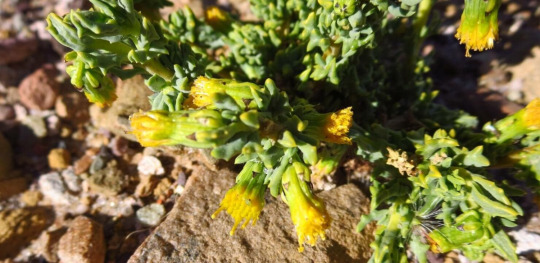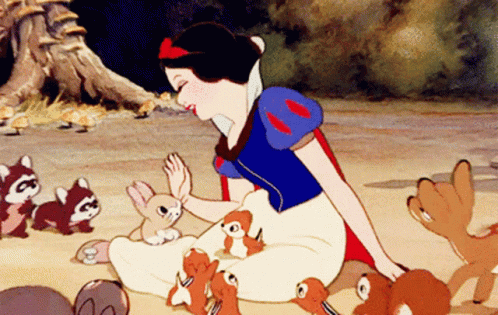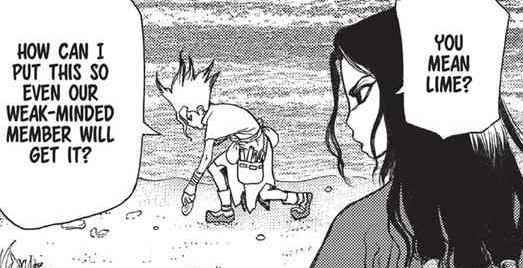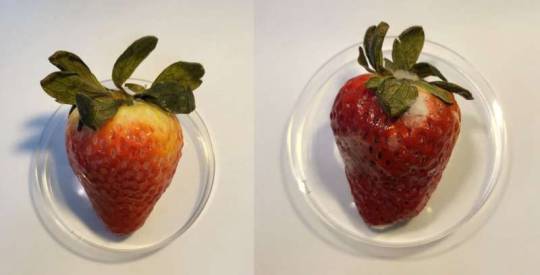#Antimicrobial compound
Text
IPNR Endura's Antimicrobial Compound Leading the Way
Embrace innovation in hygiene solutions! IPNR Endura's antimicrobial compound safeguards against harmful microbes, ensuring a healthier environment. Join the movement towards safer spaces.
0 notes
Text
In vitro antioxidant properties and antimicrobial activity of the ethanolic extract of Senecio nutans Sch. Beep. (Asteraceae)
Image: Pl@ntnet
Article published in J. Pharm. Pharmacogn. Res., vol. 10, no. 6, pp. 1026-1036, November-December 2022.
DOI: https://doi.org/10.56499/jppres22.1471_10.6.1026
Felipe Surco-Laos1, Jorge A. Garcia1, María R. Bendezú1, Doris Laos-Anchante1, Juan F. Panay-Centeno1, Manuel Valle-Campos1, Juan J. Palomino-Jhong1, Paulina Eliades Yarasca-Carlos2, Berta Loja3, Angel T.…

View On WordPress
0 notes
Text
Whispers and Melodies
(Rhysand X Reader)

Summary: She has heard a deep melodic voice speaking to her from a far away place for decades. Anything from snippets of a longer conversation to roars that shook the very earth she walked on.
Rating: T (for now)

A cup of tea sat cooling on the window sill of a small cottage on the outskirts of the Day Court. The quaint home overlooked a large river delta with roiling waters whose waves flowed into an ocean only a stone's throw away. Inside the cottage sat a girl gazing into the night sky while she forgot all of the day's troubles.
The healer had spent the entire day tending to patients from the village near her cottage. It was a quaint town whose community was close-knit and small. It had taken the townspeople a while to grow accustomed to me but as the years had come and gone, they had opened up to each other. Her skills as a healer also aided in this endeavor. But despite how much she enjoyed her dealings with the townspeople, her favorite part of her job was the research that it allowed. At the end of a hard day of treating her patients, she could lock herself up in her office and lose herself in the formulas and ratios she tested in her compounds.
Y/N padded over to her small kitchen, mug in hand, and placed it into her sink before walking toward her research room and locking the door behind her.
She always thought of her research room as a safe haven. The vials full of various substances that she had been testing littered her desk along with her carefully taken notes about the contents and phase changes of each substance on her log book. Her most recent project had been to synthesize some type of blood clotting or replenishing potion that would allow her to administer it to a patient who was more likely to die of blood loss before she even had the chance to solve any of their injuries. A potion like this would allow her ample time to stitch up any wound or brew some other cure for poisons and the like.
Her current issue consisted of not being able to stabilize the potion for long-term storage. The fennel root and crushed carrowfish shell she’d added seemed to be slowly decomposing each other which made the potion essentially useless after more than 4 days of storage. The trials she was running right now attempted to add some honey which slowed the reaction process as well as introduced some antimicrobial properties to the potion.
Y/N quickly jotted down the physical changes in appearance and consistency of each of the test tubes with varying amounts of honey. Each testing glass contained more honey than the last. Whichever combination yielded the best preservation and overall effectiveness is the ratio that she would begin perfecting.
Y/N stayed in her laboratory until she felt her eyes begin to strain and her feet start to ache. She carefully placed all of her measuring tools and weights back onto her working table before she exited the room and made her way to the front door of her cottage. She undid all 3 locks and tugged the large oak door open with both her hands.
In the distance, she saw a figure. A male it seemed; lying on the ground as the ocean lapped at his skin and crusted it in dried salt. The setting sun gleamed against him and warmed his pale skin in a sheen of gold that she thought suited him much more than the sickly pallor he seemed to have. Most people tended to steer clear of her section of the beach out of some deeply engrained paranoia of outsiders. But this male seemed to have missed that particular message.

Rhysand had known he had been fooled the moment he stepped into the ballroom on that fateful day. Amaranth had promised a ball in celebration of the many alliances she had made as well as an apology to those she had wronged. Rhysand had gone to the ball purely for formalities' sake. He had always loathed these types of false pretenses that the upper echelon of fae had always insisted on perpetuating. Nonetheless, he had dragged himself out of his court that afternoon and appeared at this ball. His own cowardice to refuse Amarantha’s invitation had resulted in 50 years of extortion, rape, and violence that despite his centuries of experience, he could not seem to shake the black cloud that it had cast over him.
Feyre being his mate was not something he had seen coming nor was it something he wanted. Tamlin would treat her well, she cared for all of his people and he would care for Feyre Rhys was sure. Despite his freedom, Rhysand could not bring himself to go to his home in Velaris. His family was likely waiting for him to return but they would all know exactly what had happened to him as soon as he stepped in the door. He did not wish to deal with their horrified faces and pitying looks once they found out. So instead, he wandered.
He wandered around lands both Night Court and Day. He walked and flew so far that he ended up somewhere on a coastline. Rhys has no idea where he had landed but he didn't seem to care that he was likely lost. So as the sun set, he continued a slow walk along the cliffside coast and eventually down onto the sandy beaches. The sun sunk further into the horizon leaving only the gleaming light of a cottage in the far-off distance. As Rhys drew closer, he noticed a crop garden with some vegetables and herbs growing on the plot off to the side of the house and a water well located up a hill. Rhysand was tired. He was tired of walking, of flying, of breathing even. He just wanted to rest. He wanted to sleep on a soft bed and not have to think about anything at all, not be worried that one wrong move would result in the death of everyone he had ever loved. So he made his way closer to the cottage before sitting on the wet sand closest to the water and stretching out his long legs. The water lapped at his feet and calves, almost as if it was slowly pulling away all the tension that wound itself in his legs. He stared out at the ocean for what seemed like an eternity. Rhysand got lost in the repetitive movements of the water and the slowly setting sun in the distance casting beautiful colors on the waters and sand.
When he eventually woke up from what felt like an eternity of slumber, he was not nestled in the sand as he had expected. Instead, he was cushioned underneath with quilts and pillows, and on top of him lay thick blankets to combat the morning chill that often accompanied this time of the year. The room itself looked lived in, to say the least. Canvas’ and embroidery projects were pinned to the wall in various positions. Everything from people to landscaping were inscribed into the wall. Pages that appeared to be ripped out of books with certain lines underlined also adorned the cedarwood walls. The entire room smelled of something woody and calm that Rhysand couldn't quite a place. He stretched up from his lying position and slowly removed the layers of quilts and blankets from him. His legs felt sore and ached from the hours of walking he had done the day before. He tried to stretch his wing muscles but they also ached from their overuse. He hadn't flown in decades, yet he had taken to the sky’s as soon as he could as if he had never left the great blue expanse. He now felt his lack of practice as he tried to rotate his shoulders and ease the aches that had rooted themselves in his back.
A shuffle from outside the door had Rhysand snapping his neck towards the door. He slowly lifted himself off the bed, careful to make sure none of the wooden beams snapped. He paced towards the door and stuck his ear against the wood grain to listen for any further movements. He was listening to the slicing of metal that would indicate a weapon the characteristic heavy footfalls that usually indicated a warrior of some capacity. Instead, he heard sharp cutting noises blunted by a wooden board, the shuffle of lithe feet, and the soft humming of a female.
Hello everyone! It has been too long! So many things have happened in the last months and I can't wait to get back into the groove of posting multiple-part stories.
#acotar#acotar fanfiction#acotar fic#acotar imagine#acotar series#rhysand x reader#rhysand#rhys acotar#rhys x reader#feyre archeron#a court of thorns and roses#rhysand x you#rhysand x y/n#rhysand x oc#night court#velaris#a court of mist and fury#a court of silver flames#a court of wings and ruin#morocco#Spotify#azriel acotar#cassian#feyre acotar#fae folk#acomaf#acowar#acosf#acofas#a court of frost and starlight
113 notes
·
View notes
Text
HERBS AND THEIR BENEFITS.

Ginger:
Eating ginger can cut down on fermentation, constipation and other causes of bloating and intestinal gas. Wear and tear on cells. Ginger contains antioxidants. These molecules help manage free radicals, which are compounds that can damage cells when their numbers grow too high. It is useful in minimizing menstrual cramps, and it relaxes the muscular spasms as well
Cinnamon:
high in antioxidants, which may help protect against disease, inflammation and ageing It may improve gut health, dental hygiene, reduce cholesterol levels and lower blood pressure.
Garlic:
Garlic offers an immune system boost to help prevent colds and the flu virus. One study found that allicin, an active component of freshly crushed garlic, had antiviral properties and was also effective against a broad range of bacteria
Chamomile:
commonly used for many human ailments such as hay fever, inflammation, muscle spasms, menstrual disorders, insomnia, ulcers, wounds, gastrointestinal disorders, rheumatic pain, and hemorrhoids.
Rosemary:
antimicrobial, anti-inflammatory, anti-oxidant, anti-apoptotic, anti-tumorigenic, antinociceptive, and neuroprotective properties. It could prevent hair follicles from being starved of blood supply, dying off, and leading to hair loss.
Tumeric :
Turmeric has been used in both Ayurvedic and Chinese medicine as an anti-inflammatory, to treat digestive and liver problems, skin diseases, and wounds.
146 notes
·
View notes
Text

Enhancing the antimicrobial activity of silver nanoparticles against pathogens by using tea extracts
Researchers at the Institute of Physical Chemistry of the Polish Academy of Sciences (IPC PAS) have demonstrated that green tea–silver nanoparticles as a powerful tool against pathogens such as bacteria and yeast. Their work is published in Nanoscale Advances.
Their goal was to develop an efficient method to combat bacteria that are otherwise unaffected by antimicrobial agents, such as antibiotics.
The overuse of antibiotics has led to the emergence of resistance to these compounds, becoming one of the biggest health threats worldwide.
Read more.
38 notes
·
View notes
Text
Get you a friend who isn't from your field but listens to your fun fact about antimicrobial compounds in ants and leads it on to questioning spider genetics somehow.
My brother in science why😂😂😭😭 now I'm confused and I need answers😭😭
26 notes
·
View notes
Text
Chapter 4 Trivia
Tsukasa's stone-cold goals are revealed.
Tsukasa's still got some lion blood on his hand from the punch he delivered in the last chapter.


Because lions have to be stronger than their prey, they're full of muscle and don't have a lot of fat, making their meat tough. Because of the lack of connective tissue and fat to soften the meat through traditional methods, the best way to do it is slowly over a low temperature which prevents the meat overcooking while allowing the connective tissue to break down and soften. Recommendations for cooking lion meat say 57°C over 24 hours. After that, it apparently tastes like pork, but richer.

(I couldn't find any sources on the meat smelling or tasting like ammonia, I'm forced to assume it's a side effect of their territory-marking urine?)
Normally it takes 6-8 weeks to make leather out of skin, but here Tsukasa is wearing it immediately and probably even before the body's become cold, judging by Taiju carrying Yuzuriha's statue to the base in the next panel. This is absolutely disgusting. Don't do this please.


Here we have proof Senku switches out his pouches based on what he needs. What's actually in them is anyone's guess though!

Smoking food works for several reasons. It dries the food (preventing fungal/bacterial growth), the smoke keeps insects away during the process, and the smoke itself imparts preservative and antimicrobial compounds such as the aldehydes Senku mentions. (Too much is toxic though!)

Interesting little habit you have there, Senku...

According to Senku, Tsukasa's skin is extremely pale. I'm not sure if this means he's got Snow White's complexion, or if Senku and Taiju are by comparison very tanned from working outside all day.

Tsukasa may have deemed himself the fighter, but he's no meathead! Based off his thoughtful comments, it looks like Tsukasa is quite scientifically knowledgeable himself, just not as much as Senku.


Adding lime (calcium carbonate) to soil reduces its acidity. Most plants prefer a pH of 6-7.5, which is neutral to slightly acidic. Obviously adding lime to already alkaline soil will make it even more alkaline, so you should test your soil first. Some plants like the acidity!

Heating lime to over 900°C releases CO2 and forms calcium oxide. Adding water and sand to it creates mortar, a substance that hardens by absorbing CO2 from the atmosphere and turning it back into calcium carbonate.
Fun fact: you can use the carbon in mortar for carbon dating!

To make soap, you need a fat (vegetable oil, bacon grease) and a base (lye, wood ash, lime). The goal is to saponify the fat. In modern soaps, calcium carbonate is added to bulk up the product and act as a mild abrasive.

Taiju is a very good friend for Senku because he obviously pays good attention and has a good memory. That is all.
He's just not that great for subtlety or negotiations...

Legally, "disfigurement" means to cause permanent change in a person's body, particularly by leaving visible scars which affect a person's appearance. We don't see any of that on Tsukasa, so did they heal? Was he fighting with broken fingers pre-petrification? What happened?

Freshly broken stone parts are colored in white. Does this mean as long as the stone is still white/unblemished, the pieces can be recombined?

Haha yeah it would be a shame if an evil dictator was woken up...

I still don't understand why Tsukasa skinned the lion where it dropped instead of bringing it back with them if they were going to eat the meat anyway...
27 notes
·
View notes
Text
Fire Cider Recipe 1:
Fire Cider Ingredients
2 cups apple cider vinegar
1/2 to 1 cup honey
1/2 cup horseradish
8 cloves of garlic, chopped
1/2 onion
1/2 cup ginger
1 sliced jalapeño
1/2 cup fresh turmeric OR 1 tbsp dried turmeric (optional)
1/2 lemon (optional)
1/2 orange (optional)
1 tsp peppercorns (optional)
2 whole cinnamon sticks (optional)
2 rosemary sprigs (optional)
4 thyme sprigs (optional)
Directions
Prepare ingredients and place them in a sterilized quart-sized glass jar.
Pour the apple cider vinegar and honey in the jar until all of the ingredients are covered and the vinegar reaches 1/2 inch from the jar’s top. You can use a glass fermentation weight on top to keep the ingredients submerged, but that is just a preference. Shake well. Store in a dark, cool place for a month, shaking daily. It’s in vinegar, so it won’t go bad! Once done, strain, bottle, and label.
Storage: It’s vinegar, so it keeps all winter and early spring (6 months) if left in a cool dark place. Keeps in the refrigerator for up to 10 months. You can take a dropperful every few hours, or I put 2 -3 droppers full into a big mug of hot water and drink that.
Benefits of ingredients
Ginger root – Ginger contains gingerol, an antibacterial compound that promotes body warmth, helping to fight off cold symptoms.
Horseradish root – Horseradish strongly stimulates the digestion, increasing gastric secretions and appetite. It can be of use in both respiratory and urinary tract infections. Horseradish is a natural expectorant with natural antibacterial properties. It helps in easing throat and upper respiratory tract infections. Has been used to fight cancer naturally.
Jalapeño peppers – Useful for increasing circulation and to get mucus flowing. Anti-inflammatory, pain reliever, and anti-irritant. It is used as a digestive aid to stimulates gastric juices.
Garlic – Boosts the immune function and opens pores of the skin to lower a fever. This herb’s antibacterial and antimicrobial properties make it useful in treating bladder and kidney infections, yeast infections, strep throats and ear infections.
Onion – Another cancer fighter, onion’s compound quercetin is a natural disease fighter.
Lemon – The levels of vitamin C found in the juice and peel are extremely effective against bacterial infections! Lemons act as a great potentiator in this cider recipe.
Rosemary Sprigs – This piney plant alleviates muscle pain, boosts the immune system, and relieves cough while you’re sick.
Turmeric – Turmeric increases the antioxidant capacity in your body. This means that all of the new antioxidants in this cider will have a home to live and work in!
Black peppercorns – Greatly boosts absorption of turmeric.
Apple Cider Vinegar – (Use organic) ACV kills multiple types of bacteria. When used in conjunction with the other herbs of this recipe, it becomes a powerhouse of health.
Local Raw Honey – Before becoming sick, local, raw honey helps your body fight off local infections and allergens. After becoming ill, it suppresses coughs and continues fighting off bacteria
#fire cider#witchcraft#witchy vibes#witch aesthetic#witchy#witchblr#witchythings#witches#witch#spells#witchcore#spellcraft#spellwork#spellcasting#witch tips#witchy herbs
23 notes
·
View notes
Text
Van Leeuwenhoek Award for the best microbiology paper of 2023 from a postdoc in the Netherlands goes to... one proud lady, aka Miss Biophys.

The awarded paper here:
16 notes
·
View notes
Text
Antimicrobial Compound with Bacterial Resistance
Unveil the future of infection control! Explore the breakthrough antimicrobial compound that stands strong against bacterial resistance. Learn how science is winning the battle against harmful microbes. Visit IPNR Endura Antimicrobial Compound.
#Antimicrobial compound#Bacterial resistance#Infection control#Antimicrobial technology#Microbe resistance
0 notes
Text
Is it possible, perhaps, that such cultural use of plants and animals to treat injuries and illness was inherited from a common ape-like ancestor millions of years ago?
As in humans, self-medication in wild animals is not uncommon –individuals from a diverse range of species, including chimpanzees, select particular plant foods that contain chemicals known to treat infection by parasites.
For example, caterpillars ingest plant toxins when infected by parasitic flies and gorillas consume a wide variety of plants that contain known compounds important in human traditional medicines.
Some species, such as wood ants, even anticipate infection, adding antimicrobial resin from nearby trees into their nests, which reduces the colony’s exposure to microbes.
To date however, this widespread behaviour almost always centres on self-medication with plant material. Never before has the use of insects on wounds been observed.
Over a 15-month period, beginning in November 2019, the team observed 76 open wounds on 22 different chimpanzees. There were 22 events of insect application by ten different chimpanzees. On 19 occasions, various individuals were seen applying an insect to one of their own wounds.
They caught an insect from the air, which they immobilised by squeezing between their lips. Then they placed it on an exposed surface of the wound and moved it around using their fingertips or lips. Finally, they extracted the insect from the wound.
But the use of insects didn’t stop there. In a remarkable act of “allocare” (caring for another individual) a mother was seen applying insects to her offspring’s wound, and a further two adult chimpanzees treated the wounds of another community member.
Wake up babe, new/old "Law of the Jungle" lore just dropped!
94 notes
·
View notes
Text
Just saw something interesting in the Hong Kong version of Re:99, though I'm not sure if they'll change the title later on.
youtube
[Title ID: A video from the box: [Velutin 3D frame display 一段來自箱中的影像:【*肖像定格*維爾汀立體相框手辦展示錄影】 Uploaded Dec. 29th 2023, 10a EST]
(Video Link Here)
The first thing that caught me off-guard was the channel somehow misspelling Vertin's name like this. So I went the obvious route and looked up what velutin might mean as a word, and here's what I found.
Wikipedia & PubChem: Velutin is a chemical compound isolated from Xylosma velutina and açaí fruit. It is classified as a flavone. It is a compound used for anti-melanogenic/skin whitening, anti-inflammatory, anti-allergic, antioxidant, and antimicrobial (kill or slow down the spread of microorganisms, including bacteria, viruses, protozoans, and fungi) purposes.
Of course, Vertin's is the only Arcanist that's immune to the Storm and has the mysterious antibody 'Asymmetric Protein G' from the Foundation's preliminary experiments to become Timekeeper, so the fact that a mistranslation links her to another real-life antibody seems like something they would do on purpose. After all, Vertin's mother had that same immunity and Vertin's name is a alias as well, so who's to say that it might hint to what her real name is?
Just some food for thought before the New Year, that's all. 🙃
13 notes
·
View notes
Text

Power of Clove Root
Clove root, also known as clove, is a spice that is derived from the flower buds of the clove tree. This spice has been used for both medicinal and magical purposes for centuries and is a staple ingredient in many cuisines around the world.
One of the most well-known medicinal properties of clove root is its ability to provide pain relief. The active compound in clove, eugenol, is a natural painkiller that has been used to relieve toothaches, headaches, and other types of pain. Clove oil is often used topically to relieve pain and inflammation in the muscles and joints.
Clove root is also known for its antimicrobial properties. It has been shown to have powerful antibacterial and antifungal properties, which makes it a useful ingredient in natural remedies for infections and skin conditions. Clove oil is often used in aromatherapy to boost the immune system and ward off infections.
In addition to its medicinal properties, clove root is also known for its magical properties. In many cultures, clove is believed to have protective properties and is often used in rituals and spells to ward off negative energy and spirits. It is also believed to have the power to enhance mental clarity and intuition.
Clove root is also associated with love and attraction. It has been used in love spells and potions throughout history and is believed to have the power to enhance attraction and passion. Clove oil is often used in aromatherapy to promote relaxation and sensuality.
In cooking, clove root is a versatile spice that can be used in a variety of ways. It is often used in sweet dishes, such as baked goods and desserts, as well as in savory dishes, such as curries and stews. It is also a popular ingredient in mulled wine and other warm beverages.
However, it is important to note that clove root should be used in moderation as it can be toxic in large amounts. Clove oil should never be ingested as it can cause serious side effects, such as nausea, vomiting, and seizures.
In conclusion, clove root is a versatile spice with both medicinal and magical properties. Whether you are looking to relieve pain, ward off negative energy, or add flavor to your meals, clove root is definitely worth exploring. However, it is important to use it responsibly and under the guidance of a qualified healthcare practitioner.
#green witch#green witchcraft#nature witchcraft#nature witch#cottage witch#herbal witch#garden witch#baby witch#witchcraft 101
32 notes
·
View notes
Text
on washing clothes from Mend! A refashioning manual and manifesto by Kate Sekules
(please buy the book, or rent it from a library, or order it through a library to rent from them, or rent it through a library ebook collection etc. etc.)
Wash Less
Washing is killing your clothes. Every laundering shortens a garment’s life by, oh, a month (see endnote 8*). I bet the source of the one-wear wash idea was Procter & Gamble’s Mad Men–era marketing team: overwashing sells more Tide (it can also redeposit soil on clothes and set stains permanently). Not washing is getting awfully trendy now, for green reasons, but the main mend-related reasons are that less washing—and definitely less tumble drying—paradoxically saves your favorite clothes, and probably time, too.
There are three reasons to wash a clothe: removal of stain, or of germ, or of smell. I daresay smell (or fear of) is what propels us fastest to the washing machine. But listen up.
Less Laundering ≠ More Stinking
To overgeneralize, but not really, because athleisure, clothes get stinky when they’re made of synthetic fiber. Ridiculously, the clothes manufactured expressly for sweating into are the most petrochemical of the lot.
Yes your performance fiber top wicks your sweat, but then it hugs it to its bosom, maybe refusing to let
it go, ever, in a phenomenon scientifically named perma-stink. Synthetics are hydrophobic but oleophilic—they hate water, but love oil—so they cling jealously to body odor compounds, but refuse the advances of your washing machine.
The more you fight your running tights, the more they resist—dryer sheets and extra detergent and heat drive the smell-causing bacteria deeper into the fibers, where they take up residence. Antimicrobial finishes such as silver chloride don’t deter them at all. It is gross.
I’m not here to lecture on eco-water-saving detergent-minimizing, though this is a happy side effect of many old-new methods.
I’m here to keep good clothes alive and mendable. I confess I’m a bit conflicted about stains. Set-in stains invite mending, and mends invite conversation, and then you can tell everyone about the bacteria partying in their pants.
So I’ll ignore stains, aside from the kind that attack and degrade fabric or can’t be mended or spoil the overall beauty of a thing.
Speaking of ignoring, follow only the bits that sound appealing: the last thing we want is the return of washday labor and guilt. I’ve been around the laundry block—never owned a washer-dryer till I was a mom; been a student, a traveler, dirt poor, addicted to wash-dry-fold service—and after all this, I’ve discovered that tending clothes is actually fun.
Anyway, decide for yourself. Here are assorted old-school and costume specialist hacks to mend your cleaning routine and keep your favorite garments alive:
Gym stink. Sweat is odorless. The smell is bacteria breaking down proteins into acids. Left in a swampy pile, these reproduce like a horror film. Arrest the breeding! Rinse gym things out in plain water and hang to dry right after committing the sweat.
Or switch to all-cotton workout wear. It’s hydrophilic and oleophobic, the opposite of synthetics, so absorbs and holds or wicks sweat, but resists oils and smells.
Aromatic pits and the crotchal region. Sorry to be graphic, but you know what I’m talking about. Try these professional theater costume department and vintage dealer nowash fixes:
Give it a drink. Spritz generously with pure (cheap) vodka; let dry. No alcohol smell!
Connect to earth. Sprinkle fuller’s earth on the bits overnight. Vacuum up, with stink.
Acidulate. For allover smell, steam garment over a hot bath of white vinegar solution.
A paste of baking soda and water is much cheaper than Febreze and often works better.
SOS: Save Our Sweaters. Handwashing in cool water is the only way. You don’t need to do it often. Invest in perfume-priced cleansers or use baby shampoo. Rinse thoroughly, squeeze gently, then . . .
Reshape (it’s called blocking) the wet sweater on a fluffy towel, Swiss roll it, and kneel on the roll to squish out water. Never wring knitwear. Dry on a fresh towel, turning it periodically.
Air dry whatever you can, especially vintage, most of which should never go in the dryer. Your hand mends last longer when air dried, too. Use ordinary hangers if you lack line or frame.
Add a few drops of lavender essential oil to water in a spray bottle to spritz on while ironing.
Yellowed cotton might have gotten that way from dry-cleaning. Add borax to the wash. And hang out in the sun—which is mostly terrible and verboten for fabrics, because of this bleaching effect.
Care labels are often as generic as the website cookie disclaimer that you never read and fulfill a similar legal function. Nearly everything can be gently handwashed.
Exceptions are: velvet, satin, taffeta, brocade, some silks, anything tailored or structured, and everything under Special Concerns in the chart on pages 144–45 (Historic fabrics, weighted silk, embellished fabrics, real lace, metallics, 3d effect fabrics, fur real/fake, net/mesh, hand painted, leather, suede*). Beware rayon: very tricky and variable.
Spot clean and steam fancy clothes—or, in fact, most clothes. Vintage dealers do.
For embellished items, borrow the museum conservator method: vacuum on low with open vent and flat nozzle through a gauze screen edged with tape.
Forget wasteful sticky-sausage lint cleaners. Use an old-school clothes brush or the kind that picks up lint one direction and deposits it on the reverse journey.
Mildew. Omnipresent fungal spores that feast on your damp natural fibers. It’s serious and contagious. Dry, vacuum, dry-clean, revacuum. It may be too late for this poor garment.
A final little trick. Scribble all over metal zippers with graphite pencil: nonstick magic.
endnote 8*
Unreliable statistic that I made up. This is an experiment in misinformation. Because nobody’s done this math, I wonder if the figure I just invented will get quoted and thereby eventually become true?
Other notes:
No, really, perma-stink was coined by human ecology professor Rachel McQueen et al., “Odor
Intensity in Apparel Fabrics and the Link with Bacterial Populations,” Textile Research Journal
77, no. 7 (2007): 449–56.
The no wash and the dry (or raw) denim movements are ecologically motivated but are also
having the effect of bringing more natural fibers and finishes to market. They sell at a high
price point for the most part, but this is beginning to trickle down—though such clothes can’t
and shouldn’t be sold too cheap; they’re investments. Also, PS, infusing with peppermint oil or
whatever does nothing long term to decrease the need for washing: all natural, untreated
fibers are resistant to microbes.
Ulterior motive: as a lifelong devotee of pure cotton sweats, I prefer its wicking, slightly baggy,
nonstinking qualities, and wish it would catch on.
I could go on and on about detergents, which are often foul in so many ways. For an up-todate and reliable breakdown of their relative merits, see the rated reviews by the 501(c)(3)
nonprofit Environmental Working Group, https://www.ewg.org/guides/categories/9-Laundry/.
You may find your go-to wash solution has earned a solid “F” grade.
Extra credit: invest in a horizontal drying rack or make one out of window screen gauze.
A steamer is a wise investment—they’re effective, gentle, and far more fun than ironing.
#hope people find this useful#I love this book#great for learning more about fabrics#also mending them
94 notes
·
View notes
Photo

An edible CBD coating could extend the shelf life of strawberries
Soon, you'll be able to get a box of freshly picked, sweet strawberries from the grocery store or local farm stand. But it's disappointing when you get them home and find that the ones at the bottom have started to rot. To increase the berries' shelf life, researchers reporting in ACS Applied Materials & Interfaces have incorporated cannabidiol—a non-hallucinogenic compound from cannabis known as CBD—and sodium alginate into an edible antimicrobial coating.
CBD is popular because of its potential therapeutic effects. But this cannabinoid has also been shown to have antioxidant and antimicrobial properties. In previous studies, CBD limited the growth of some bacteria and pathogenic fungi, such as the ones that cause fresh fruits and vegetables to rot.
However, the oily compound needs to be evenly distributed in water before it can be widely incorporated into foods or used for food preservation. One possible way to do this is to encapsulate the CBD molecules in edible polymers. So, Pongpat Sukhavattanakul, Sarute Ummartyotin and colleagues wanted to see if a food coating made using CBD-filled nanoparticles could promote antimicrobial activity and extend the freshness of strawberries.
Read more.
70 notes
·
View notes
Note
hey!! im gonna humor you (but also im just really interested), how’s your capstone? it sounds compelling:>
i think its SO cool and interesting but I may be biased i've spent the last like,, six months on this researching and planning and im starting statistical analysis next week (planning to do a t test several times over, if I have to do ANOVA i'll cry. I could settle for pearson correlation coefficient theyre not terrible)
(can you tell im a STEM guy through and through)
short version: i'm studying how often a pair of jeans should be washed based on accumulation of bacteria over a period of time, the project itself was conducted through seven consecutive days, being worn for a minimum of three hours a day, however I do believe this information could transfer over to "wears" instead, so instead of three consecutive days you could wear them three times over maybe two weeks and get similar results (in theory, this is inference made based on my decent amount of research)
longer version:
the whole reason clothes need to be washed beyond removing stains is because of odor. how does that odor get there? bacteria, baby! there is a large amount of bacteria residing on your skin (which is wonderful for your immune system, first line of defense!). The amount, types, and variety/biodiversity of bacteria is determined by many factors, including but not limited to pH, temperature, and moisture. how do these bacteria survive on your skin? sweat! sweat is inherently neutral and has no odor, it gains an odor as a byproduct of bacteria metabolizing it.
this odor is transferred over to clothes through the sweat, it wics into the textile and attaches to the fibers, bringing the bacteria along with it, they will just exist together for the most part, creating a malodor but nothing intense for now, the real fun part happens when the sweat dries. as the sweat dries, the solutes and compounds that the bacteria metabolize are severely concentrated, so the bacteria can access more of it quicker, giving it much more energy than it previously had access to, allowing irreversible adhesion to take place, which when built up can cause a lingering malodor, discoloration, loss of textile strength (thinning) not related to natural wear and tear,
the material a textile is made of will impact how sweat, sebum, and bacteria interact. most clothes are made with any combination of these three things: cotton, polyester, and spandex/elastane, each with different properties and attributes causing. ive read some journals/studies suggesting spandex to have a degree of antimicrobial properties, and for denim/100% cotton to have a degree of antifungal properties
cotton and polyester differ in many ways due to being natural vs synthetic, with one being hydrophilic and the other hydrophobic, different hygroscopicity, and general structure, as well as preparation for textile making. this results in different sebum distributions as it dries, polyester causing a uniform distribution with no respect for being face up/face down, while with cotton it dries into spherical droplets, face down, which could lead to implications and suggestions with and about bacterial behavior and odor formation (different bacteria cause different odors!)
the dyes used for clothes can also impact bacteria, it can accelerate or decrease bacterial growth/quantity/malodor, for example black jeans will gain a unique malodor that blue jeans may have. different dyes and dying processes can impact the integrity of the textile to begin with, such as stonewashing or acid wash which compromise the health of it, and traditional/classic indigo dye will strengthen/better it, with its natural antimicrobial properties. ultimately, different dyes will also have chemical properties that will affect how bacteria, sweat, and sebum interact and absorb (adsorb?)
jeans can have a different washing rate than say, t shirts, for a few reasons
one, denim is in reference to how the fibers are weaved to form the textile itself, a different structure means sweat and sebum (oil from your skin) will interact differently
two, where and how you sweat! sure you sweat everywhere for the most part, but it accumulates and acts differently in some places compared to others, the most prominent sweating is at the armpits so it has all these processes happening quickly creating a greater need, compared to your legs where it may not be happening as quickly, if at all
so with all that background knowledge, what did I actually test?
I had a person wear the same pair of jeans for seven days, minimum of three hours a day, medium wash, indigo dye, 100% cotton. i took samples on day 0, 1, 2, 6, and 7. I could not get data for days 3-5 due to reasons out of my control, but it ultimately may not matter because there was no seemingly visible difference in amount of bacteria compared to day zero and one until day seven! at day seven it was intense, easily reaching fifty colonies per plate (two sections per day, each section gets played five times), compared to the one to ten colonies, <= 2mm on the first few days,
i predict that my statistical analysis will not show a significant difference (probably p value <0.05) until day seven, but i may be entirely wrong either way, i think its going to be very interesting!
in theory it would have applications in determining optimal washing frequency, based on a variety of factors (significant physical activity or sweating would decrease amount of time between washes) to create the longest possible lifespan of the jeans, especially with the effects of fast fashion and planned obsolescence
washing too frequently can also negatively impact the lifespan of a textile and make it degrade much quicker, and not washing it frequently enough will cause bio deterioration
I would love to do this project again another time, perhaps with more people, or exploring other %make ups, brands, and dyes/colors
#apollo answers#capstone#i love science i love math#thank u for the ask#i never get to talk about science with a few rare exceptions#i hope this was coherent theres like several base facts that need to be established that have no relation until later which makes figuring#out a natural flow order for a linear essay like this difficult#for my poster i might do a flow chart instead of a bulleted list of facts#id love to answer any questions btw !! this is my pride and joy ive been doing this since like. october.
3 notes
·
View notes